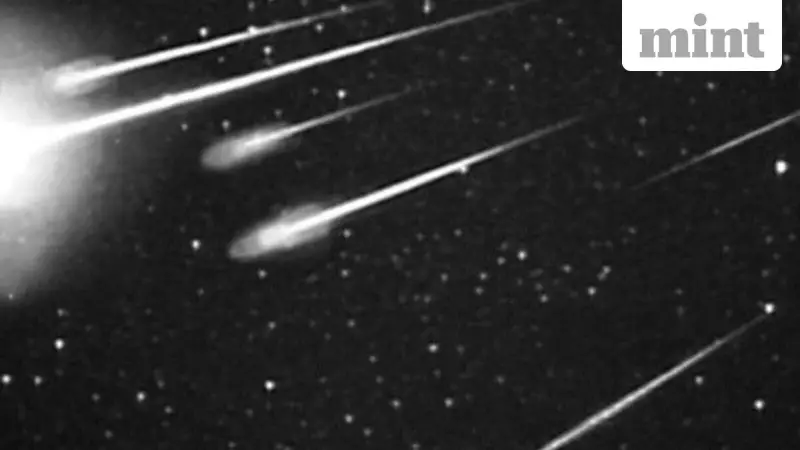
The night sky is set to dazzle as the annual Leonid meteor shower puts on its celestial show, offering Indian stargazers a spectacular opportunity to witness nature's fireworks. This much-awaited astronomical event is currently active and will continue to grace our skies until early December.
Leonid Meteor Shower: Dates and Peak Viewing Times
The Leonid meteor shower officially runs from November 3 to December 2, according to NASA astronomers. However, the most spectacular display will occur during the peak hours. Early morning of November 16-17 will offer the best viewing opportunity, when meteor activity reaches its maximum intensity.
While typical rates hover around three meteors per hour, the Leonids are considered a major meteor shower due to their exceptional characteristics. These celestial travelers are renowned for their brilliant displays, incredible speed, and vibrant colors as they streak across the darkness.
What Makes Leonids Special: Fireballs and Meteor Storms
The Leonids hold a distinguished place in astronomical history for several remarkable features. These meteors travel at an astonishing speed of 44 miles per second (71 km/s), ranking them among the fastest meteors visible from Earth. Their velocity contributes to their bright and often colorful appearances.
Every 33 years, approximately, the Leonids can transform into a breathtaking meteor storm. During these extraordinary events, hundreds or even thousands of meteors can illuminate the sky each hour. Historical storms in 1966 and 2002 created memories that lasted lifetimes, with meteors appearing to fall like celestial rain during brief, intense periods.
The shower is also famous for producing two special types of meteors: fireballs and Earth-grazers. Fireballs are exceptionally bright meteors that shine brighter than magnitude -3, created by larger debris from the parent comet. Meanwhile, Earth-grazer meteors streak dramatically along the horizon, often displaying long, colorful tails that seem to kiss the edge of our world.
NASA's Expert Tips for Indian Skywatchers
NASA scientists have shared crucial advice for optimal meteor viewing. For those planning to watch the spectacle from India, here are the essential recommendations:
Start your observation around midnight local time when the constellation Leo rises higher in the sky, increasing your chances of spotting more meteors.
Find the darkest location possible, far from the intrusive glow of city lights. Rural areas, hill stations, or designated dark sky parks offer ideal conditions.
Dress appropriately for nighttime temperatures and bring blankets or a comfortable lawn chair. Meteor watching requires patience, so physical comfort is important.
Position yourself lying back with your feet pointing eastward, and simply look up at the expansive sky. Remember that meteors can appear anywhere in the sky, not just near the constellation Leo.
Allow your eyes 20-30 minutes to fully adjust to the darkness. This significantly improves your ability to spot fainter meteors.
An interesting pro-tip from astronomers: looking slightly away from the radiant point (the area where meteors appear to originate) can make the streaks appear longer and more spectacular due to a perspective effect called foreshortening.
The Cosmic Origin of the Leonids
The magical light show we witness as meteors has a very tangible explanation. Meteors are caused by dust and debris left behind by comets and broken asteroids. When Earth passes through these debris trails during its orbit around the Sun, countless particles collide with our atmosphere.
These particles, often no larger than grains of sand, burn up due to friction with atmospheric gases, creating the fiery streaks we admire from the ground. The Leonids specifically originate from comet 55P/Tempel-Tuttle, which takes approximately 33 years to complete one orbit around the Sun.
This periodic comet, measuring just 2.24 miles (3.6 km) across, leaves behind a trail of debris that our planet intersects every November, resulting in the reliable annual display that continues to captivate skywatchers across India and the world.





